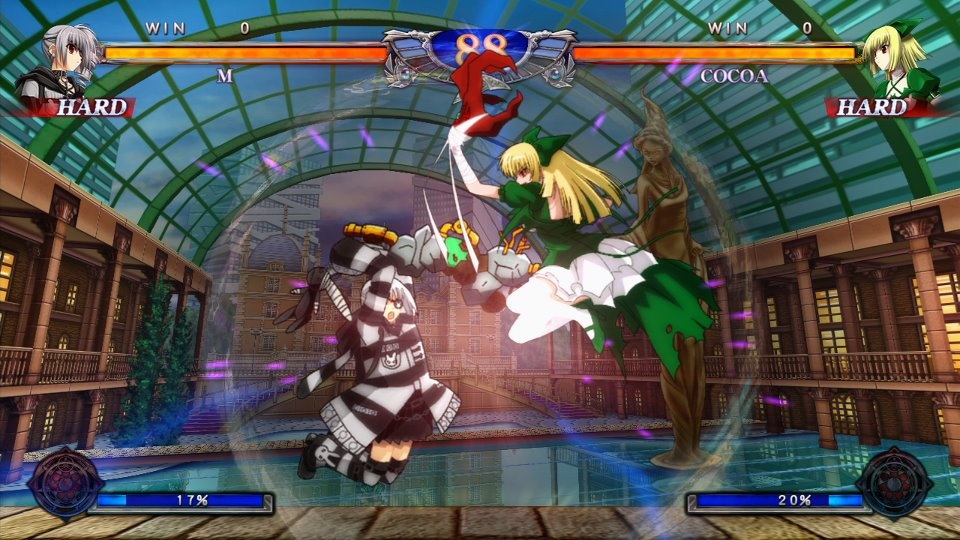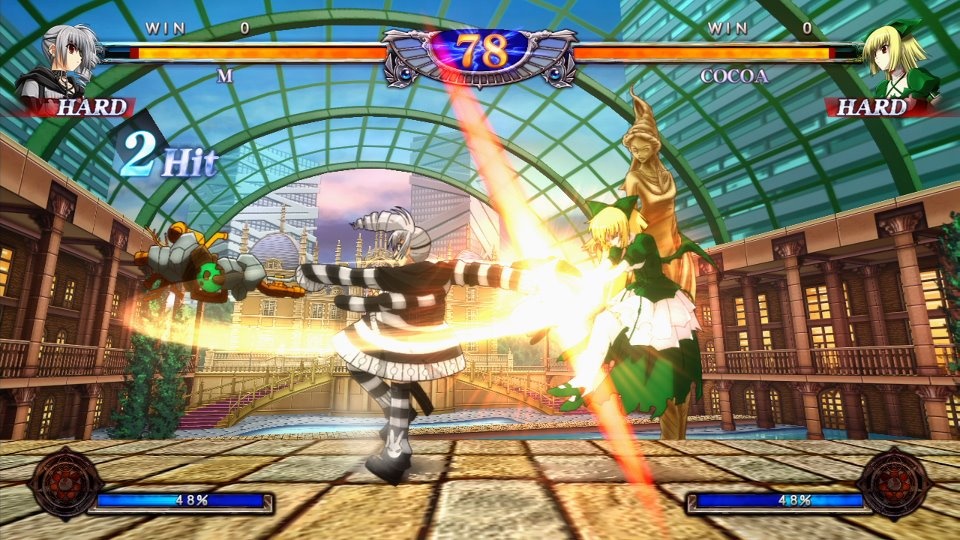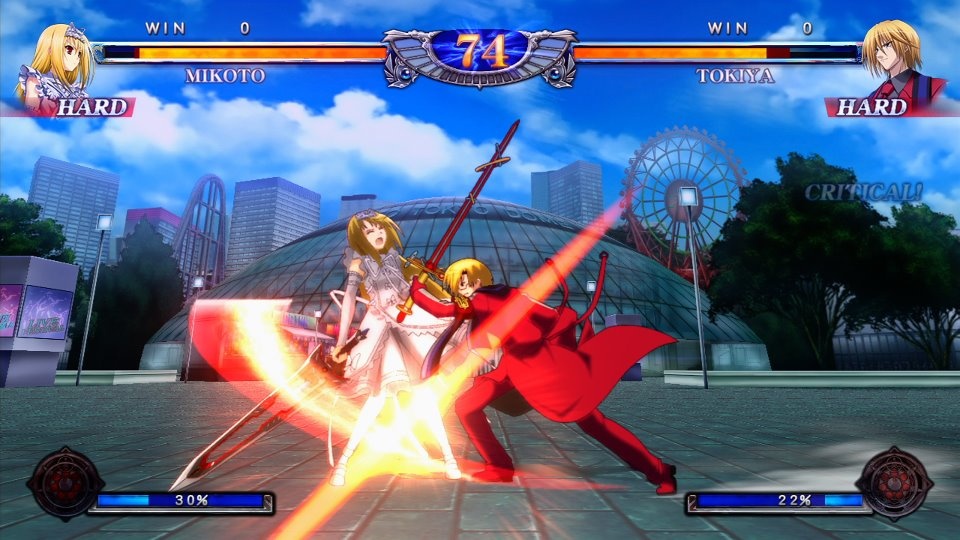If a fight broke out at an anime convention and only those who had dressed up as nurses, priestesses, ninja warriors, pop idols, businessmen, and French maids participated, the outcome would resemble Phantom Breaker, an Xbox 360 fighting game that dives into waters so shallow that there was never a good chance of anything memorable emerging.

Phantom Breaker's many parts combine to form the regrettable result. You have the standard Arcade, Story, Practice, and Versus modes. You can take things online to seek out competition from other players, but games that make button mashing as viable a strategy as skilled play aren't often improved by the addition of a stranger. A network connection doesn't suddenly breathe new life into stale design, either.
The biggest problem with Phantom Breaker is its unsatisfying combat engine, which benefits from accessibility but doesn't provide players with sufficient incentive to improve. The quarter-circle moves that Street Fighter II perfected are missing in action, replaced here by an approach you might expect from Nintendo's popular Smash Bros. franchise. Moves are executed by pressing one or more of the four face buttons either with or without an accompanying tilt of the analog stick or tap of the d-pad.
Special moves that can only be performed once meters fill do add some complexity, but the ease with which even the most powerful moves and combos are blocked, broken, and countered prevents the game from developing an enjoyable sense of rhythm. You're seldom rewarded for playing cautiously and unleashing a combo when your opponent leaves an opening, because that opening could vanish in an instant and then you'll be drawn into a time-consuming slap fight that has no long-term impact on either combatant's life meter. Unless a fighter frequently screws up big, you may be surprised by just how often the winner of a match is the person who still has the most health remaining when the timer dwindles to nothing, rather than the last person standing.

More practiced players will start breaking combos and performing counter attacks--perhaps with pleasing success--as the result of a few hours of practice, but a newcomer with no prior experience can mash buttons and break out amazing combos at a similar rate. Repeatedly slapping the face buttons a few times often produces a string of pure pain that's capable of ruining even skilled opponents. Rather than punishing players who just hammer the buttons and hope for the best, Phantom Breaker facilitates such strategies by including life meters that gradually refill over time, and by ensuring that even relatively weak combos take much longer to play out than they really should.
The characters move in a languid manner that feels almost disconnected from any controller input. It's difficult to feel involved when you so frequently have to wait for animations to complete. The slower pace also enables your opponents to step around your attacks, or through them. Backward dodges and sidesteps are common, and occasionally a computer opponent will back away to the far side of the screen and start spamming projectile moves like an amateur player might in some other fighting game. The difference is that in this case, such cheap strategies might actually work if the battle has made you impatient. The best strategy is most often a driven offense, but even then the fights drag out longer than they should because of all the broken combos.

The issues with the combat could have been somewhat alleviated if the rest of the game provided compelling reasons to play, but that's not generally the case. Consider the character roster, which consists of all of the aforementioned stereotypes but not much else. There are a total of ten characters available before you start unlocking the curiosities, and eight of the characters out of that initial set are female. You might suppose that this means there are a lot of lingering panty shots and so forth, but the artists showed admirable restraint. The ladies all look nice, and they're sexualized in only the most inoffensive manner possible. Waka, the most amply endowed of the lot, is dressed in her conservative priestess garb, and there's barely a lady in the group who wouldn't have to dress down considerably to fit in at the beach.
The urban environments where fights take place seem to have been crafted with similar restraint, but with disappointing results. They mostly consist of sharp but very static foreground images with the occasional transparent patch in the background where you'll see a second layer depicting a building or skyline. The roaring crowds, wandering animals, traffic, and other such distractions that work so well in nearly any other fighting game of note are absent here. When fights carry over to second and third rounds, the background palette colors update so that you get the impression that day is turning to twilight and then nightfall. It's a nice touch, but it's not enough.

A spectacular soundtrack could have invigorated the experience at least, but the music typically blends into the background like elevator music and the localization is inconsistent. The voice work is all presented in Japanese and even the text in the closing credits hasn't been translated. Furthermore, the text that pads the Story mode is awkwardly phrased and the characters only rarely discuss anything interesting. A few of them fight for a noble cause, but characters mostly throw the word "duelist" around a lot and talk in the blandest possible terms about how they're going to beat one another in combat. The story largely revolves around a decidedly untrustworthy fellow named Phantom who looks like he might be Santa's less benevolent twin. He promises to fulfill the wish of whichever fighter emerges victorious from his makeshift tournament, so the subject matter makes sense but does nothing to energize things.
Phantom Breaker fills most of the boxes on the traditional fighting game checklist, but it does so without any sense of style or energy. Worse, the core fighting system is fundamentally flawed. Sluggish animations and easily countered attacks make your assaults feel ineffectual, and the recharging life bars further underscore this sense of impotence. If you're looking for fun fisticuffs, you can pick plenty of better fighters than Phantom Breaker.